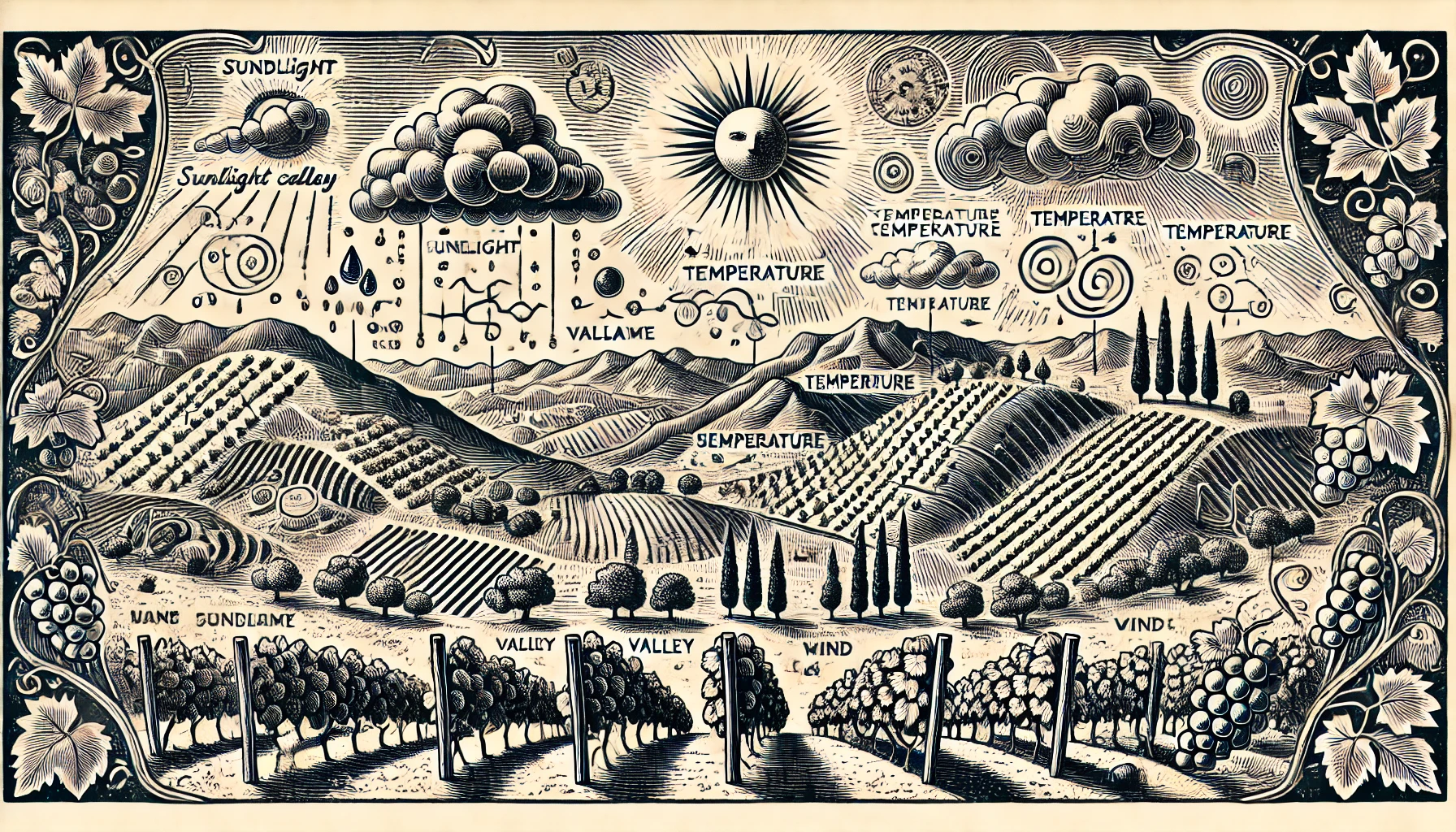
A microclimate refers to the unique climate of a specific area within a vineyard, which can significantly differ from the larger regional climate. Factors like soil composition, elevation, proximity to water, wind patterns, and the slope of the land all influence a vineyard’s microclimate. These microclimatic conditions can have a profound impact on grape quality, affecting ripening, acidity, and overall flavor.
In viticulture, microclimates are extremely important because even small variations in temperature, sunlight exposure, and humidity can change the way grapes grow and develop. For example, a vineyard located on a hillside might receive more sunlight and better drainage compared to a neighboring vineyard in a valley, which could have cooler temperatures and more moisture. These differences translate into distinct flavors, aromas, and textures in the resulting wines.
Winemakers often tailor their techniques to take advantage of a vineyard’s microclimate, choosing grape varieties that thrive under specific conditions. A vineyard with a warm microclimate might be perfect for growing Cabernet Sauvignon, while a cooler microclimate could be ideal for Chardonnay or Pinot Noir. Microclimates contribute to the expression of terroir, the sense of place that makes each wine unique.
Curious about more wine terms and insights? Visit our Wine Wiki section and explore the basic wine terms for expert definitions and tips!